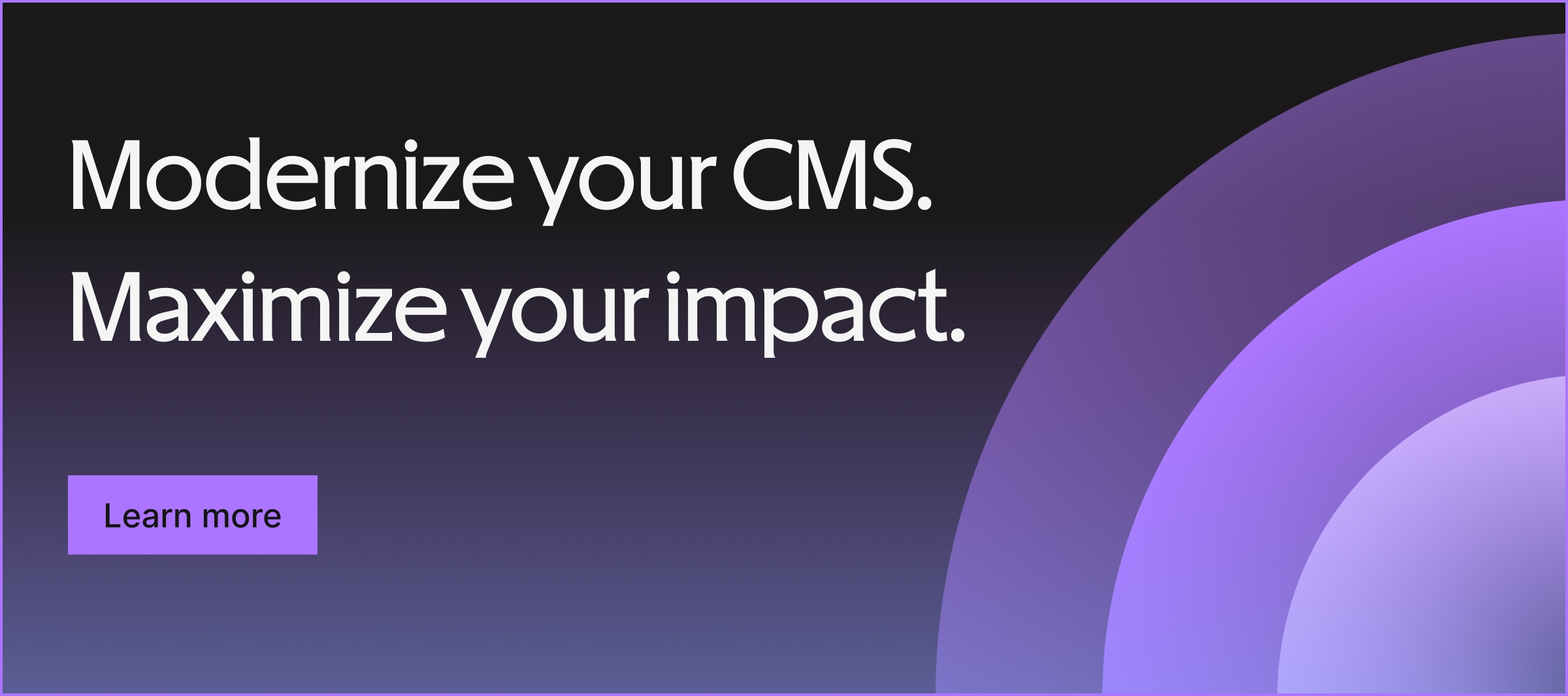
Empathy, communication and culture
On a hot July night near Cooper Square in NYC, I attended a very special lecture on the subject of change. The lecture centered around personal and professional growth, why people change and why they often struggle to.
At one point during the talk, the speaker said something sort of obvious, but also profound, and it has stuck with me ever since:
"Change is uncomfortable. That's why most people try to avoid it."
I conjure up this maxim whenever I'm planning a change on behalf of an organization and when I'm participating in changes myself. It brings to my mind the symbol of a caterpillar becoming a butterfly. I imagine the caterpillar inching around a garden to find a discreet branch, forming a cocoon, and eventually breaking through the thin membrane before drying out its wings and taking flight. While I marvel at the phenomenon, I can't imagine it's very comfortable. But I trust that the experience of flying is a fair exchange for the butterfly's temporary discomfort.
If we pay close enough attention, it's easy to see that changes and transformations are happening to us, through us and all around us all of the time. From the subtleties of nature to the stories of our families, communities and countries, change functions like the currency of the universe itself, taking every lifeform and the world that surrounds us all from one state to another continuously and forever.
Launching a new product or service, training a new team member, forming a new team, pursuing a new business goal, and all of the changes taking place at companies every day are all made of the same stuff. All change reflects a beginning and an end of something. But in business and in organizations, a distinct advantage held apart from these other types of change is the ability for people to be intentional about it.
It may seem a little abstract at first, but when we plan organizational changes, it's useful to consider this greater context because whatever changes we seek to implement are taking place against the backdrop of already ongoing, ceaseless change.
When we plan organizational change, we do so in an ever-changing environment with ever-changing people. While the final result of change may be something you've built or implemented, the process of getting there is more like merging onto a freeway full of moving vehicles than it is building a house.
This holistic and realistic view of change unlocks a few superpowers, or pillars, of change management that every leader will want to bring with them when being a catalyst for change in their organizations.
These pillars, empathy, communication and culture, can not only help you implement changes efficiently, but they can even help ensure the changes you make are good ones. I think of them as pillars because if your tactical plan for change is built upon them, you and your organization can be sure it's a sound one. If you develop them well, they may become superpowers for you and your organization.
Empathy
The first pillar is empathy because managing change means managing changing people. While change in organizations almost always means changing systems and processes, it fundamentally means changing the behavior of the humans interacting with those systems and processes.
A lot of change in organizations begins as a goal or part of a plan to address an opportunity or fix an issue, but goals and plans are not what is being managed. Goals and plans, while also essential parts of successful change management, are tactical. People and their behaviors are the substance and medium of change.
It follows, then, that understanding these people's feelings and points of view would help us know how best to motivate and invite them to take on the potentially uncomfortable task of change. Even if the outcome is an obvious benefit to the individual and business from your perspective, not everyone may be able to see that as clearly as you do.
Furthermore, the people doing the changing may see things you can't from your seat, and approaching them with sincere interest and empathy means they are more likely to share those things with you so that changes are implemented more thoroughly and completely.
When you understand where people are coming from emotionally and mentally, you can put yourself in their shoes. This helps you see the landscape from their perspective, which gives you valuable information and context that will help you in formulating your tactical approach to implementing and managing change.
Empathy is a pillar of successful change management because, fundamentally, it means simply listening to the people who will be doing the changing. Giving people the opportunity and a safe space to share their opinions, anxieties, ideas and concerns about a change in return highlights ways to make the change you implement more successful.
It gives you a chance to address potential friction in advance and update your tactical plan to avoid obstacles as they're pointed out instead of running into them during implementation. Being an empathetic agent of change in your organization builds trust and helps create buy-in for the changes you're asking people to embrace.
Communication
But empathy and listening alone don't necessarily lead to meaningful and successful change in organizations. Another essential pillar of change management is communication and the manner in which you communicate. It's essential to share the broader context and goals of implementing a change and connect that context to the people and roles involved in a given change strategy.
That is, people need to understand why they are being asked to change their behavior and what meaningful difference is anticipated for them specifically.
This is important because, together with empathy, people are more likely to self-organize to solve problems and overcome obstacles if they clearly understand the goals and expected outcomes of a collective change.
Self-organization creates a flywheel effect when implementing organizational change, helping changes proceed with minimal friction and pick up speed throughout the change process. The easiest way to achieve this flywheel effect is to communicate the benefits of a given change along with the goals and strategy.
It isn't enough just to define a goal; you must also go the extra step of helping people understand the benefits of achieving it.

Developing a communication superpower means mastering how you convey the goals and benefits of a strategic change at the macro and micro levels, and doing so for both groups and individuals. If it helps, envision a sports team taking the field with the goal of winning a game. The more the players understand the game, how to play it, and what their specific role requires of them for the entire team to be successful, the better they will work together to move around obstacles and get the ball down the field. The game would fall apart if even one player were unsure how to play, uncertain of the rules or unaware of the role they need to play for the benefit of the team.
Prolific agents of change and championship coaches alike leverage both inspiration and perspiration. Winning teams self-organize for success with the leadership of mindful coaches who can relate the benefits of achieving a goal for the whole team and for each player within it.
Culture
The third pillar, culture, is essential to change management because a culture that already embraces change and that is practiced at collaborating and coordinating their actions toward collective goals will be able to implement organizational change most efficiently and successfully.
But counterintuitively, the way to create this kind of culture is not by constantly practicing change until people get good at it. A culture that embraces change is one that is rooted in trust.
Trust is facilitated through empathy and communication, but it also requires the demonstrated ability to account for others' best interests in both word and deed. Trust is generated by showing others that you have their backs and that you are motivated by their benefit as well as your own. It comes from a genuine desire to help others and to be a collaborative teammate.

Trust is also demonstrated and can be emulated when we voluntarily lean in to participate in other teams' changes. Practically speaking, this can be as easy as being a champion for something like a new software system implementation or expressing support for a brand update on a company call. In this way, being practiced at change management also means embracing the changes we're asked to make in our own roles from time to time. Don't expect other members of your organization to enthusiastically welcome your next change rollout without reciprocally participating in theirs.
Culture is tricky, though, because it can't be forced or imposed. It's much easier to erode culture than to create it. On the other hand, leaving culture to form on its own without any intention at all is a recipe for a toxic culture. This is another reason why leading by example is so essential for creating a culture that's ready to take on meaningful change.
A culture that's genuinely ready to embrace the next change is made up of people who trust one another and believe they can be more successful on the other side of something that's potentially uncomfortable.
This kind of culture isn't fostered just by slogans and good intentions. It's lived by making sure teammates are erring on the side of transparency and sharing information, by leaders inviting questions in meetings and waiting awkwardly long before someone raises a hand, and by making sure everyone on the field has what they need to be successful.
To make culture your superpower, the most important thing you can do is lead by example and encourage others to do the same.
Conclusion
As we arrive at an inflection point in the history of technological progress, where broadband is ubiquitous and AI is increasingly hard to avoid, stories about how different businesses and industries are embracing changing market forces or being trampled underneath them abound.
Teams that can gracefully and efficiently navigate change will be market winners, and those that struggle with change will miss opportunities and may have to confront the obsolescence of their products and services.
In many companies, especially growing ones, change is often happening in several areas of the business at the same time. With AI now quickly becoming a part of everyone's day-to-day, both for businesses and individuals, the opportunity space for new and innovative products has perhaps never been so vast.
Disruption is in the air, and harnessing the winds of change with zeal and smooth collaboration is the key to making the most of this exciting time.
A couple of questions for you to consider:
- What pillars are your change management strategies built upon?
- Are there any areas within your business where change management superpowers are showing?
You might be thinking, "This will only slow us down! The problem is that our teams need to work faster and use AI to be more productive!" Indeed, there is another maxim that springs to mind here that I learned from the same lecture series, but from a different talk: If you want to go fast, go alone; if you want to go far, go together.
Mastering the art of organizational change management is mastering the art of going together. There may be opportunities and occasions that inevitably call for going it alone, but they will never take you as far as going together.
Let these three pillars of empathy, communication and culture undergird the changes you embark on. Your teams will thank you because you listened to them. Your messaging will resonate with more power and truth. Your culture will be healthy, connected and ready to take on the changes of today and whatever lies ahead.





